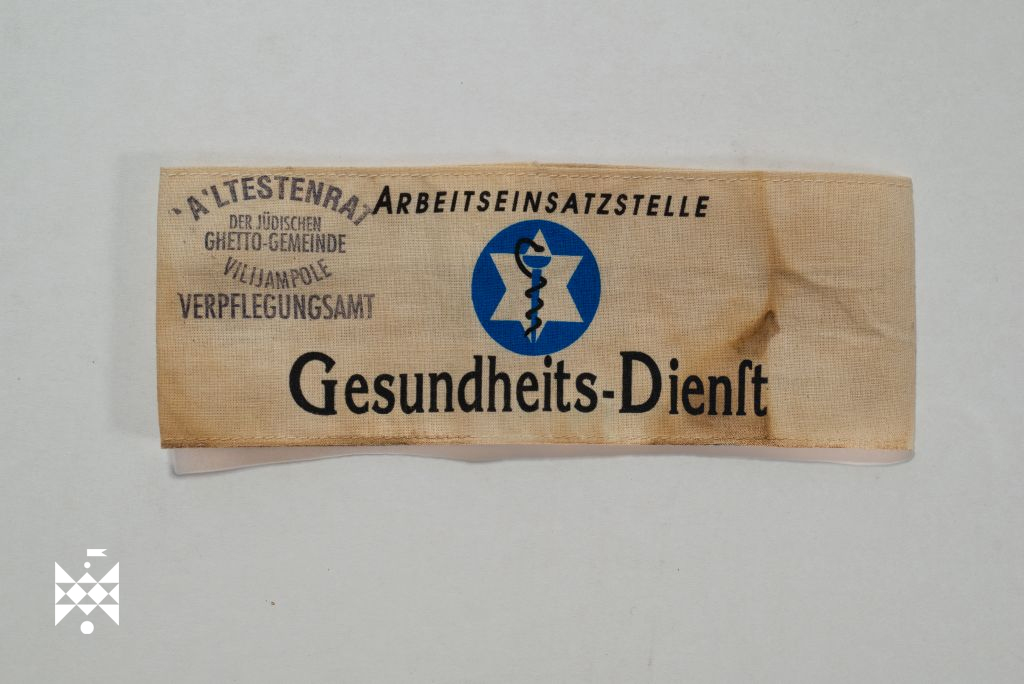EXHIBIT OF THE MONTH |
← |
Published: 2021-11-09

© From the holdings of the Vilna Gaon Museum of Jewish History
The funds of the Vilna Gaon Museum of Jewish History do not boast an abundance of original exhibits from the Kaunas Ghetto, and one of those rare exhibits is the armband of an employee of the Kaunas Ghetto Health Service (VZM 5572). It sheds more light on the organisational structure of the Kaunas Ghetto, including medical and sanitary issues in the life of the ghetto. It even allows to focus on the visual solution used back then in the form of the emblem depicted on the armband.
During the quiet period of life in the ghetto (1942-1943), it had a fairly well-organised system of internal administration. The ghetto operated in line with the principle which made it similar to a city council, despite the fact that the actual space of operation was reduced to an absolute minimum. At the top of the self-governing hierarchy there was the Council of Elders (Aeltestenrat). The ghetto administration consisted of such units as the police, justice, housing, labour, food supply, social welfare, education, health, and sanitation. The former owner of the exhibit of the month (whose identity remains unknown) was member of the sanitation unit.
The health unit of the Jewish Council was headed by Dr Benjamin Zacharin, who was assisted by the head of the ghetto hospital Dr Moshe Berman and Dr Moses Brauns. Manifestations of medical and sanitary issues were numerous in the daily life of the ghetto. In addition to the need to organise hospital activities, an outpatient treatment system and take care of their maintenance, there was also an ongoing fight against dirtiness and epidemics. Should an epidemic break out, it had to be hidden from the German authorities alongside the seriously ill and illegal abortions. In addition, the ghetto hospital was the place were lectures on various health topics were held.
This armband was designed and made in the ghetto workshop of graphic art. All the paraphernalia that were needed at the ghetto (advertisements, work certificates, permits, emblems, armbands, badges, etc.) were created by talented artists. The artists who worked there were led by graphic designer Peter Gadiel, a German Jew, who ended up in Kaunas because of his wife's relatives who lived there.
The diary of the secretary of the Council of Elders Avraham Golub-Tory says that an armband in the ghetto was not just a mere sign of authority, but also part of a uniform. The mere fact that a person wore an armband would save their life during various actions held at the ghetto. Thus, every inmate wanted to get some kind of an armband, just like they desired to get a work certificate.
Prepared by Šarūnė Sederevičiūtė, museology specialist of the Holocaust Exposition
Sources and bibliography:
Avraham Tory, Kaunas Ghetto: Day After Day. Science and Encyclopaedia Publishing Institute, 2000.
Hidden History of the Kovno Ghetto, compiled by D. B. Klein, Boston, USHMM, 1997.
Samuel Gringauz, ‘The Ghetto as an Experiment of Jewish Social Organisation (Three Years of Kovno
| ↑ | ← |
